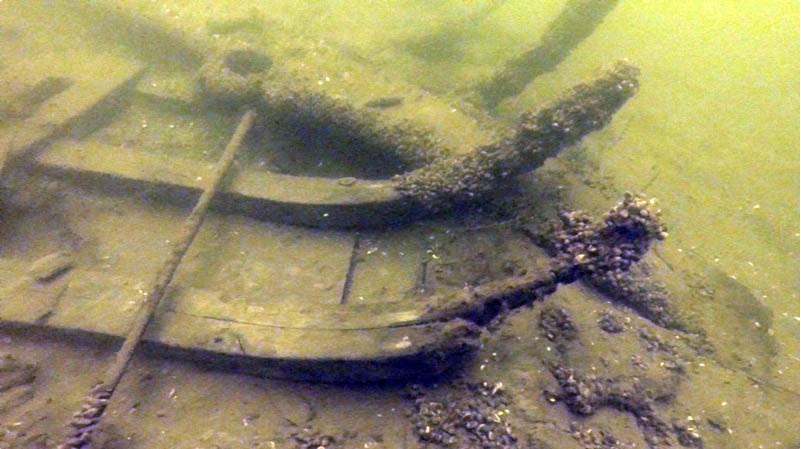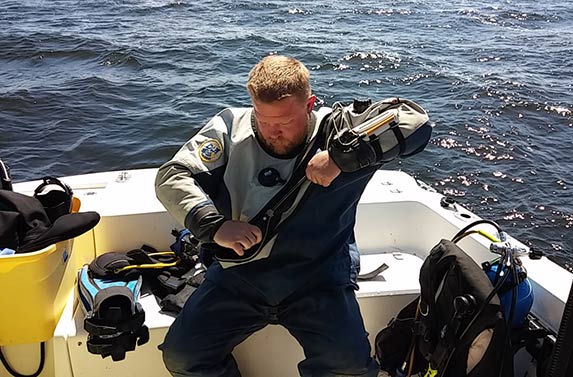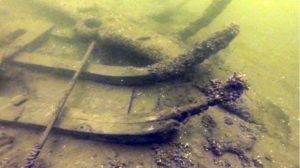
- This event has passed.
Free Lecture: The Discovery of an Original Durham Boat
September 9, 2018 @ 2:00 pm - 3:30 pm
Free
 Indiana University of Pennsylvania anthropology professor Ben Ford will present a free public lecture on his recent discovery of an original Durham boat on Sunday, September 9 at 2 PM in the Washington Crossing Historic Park (PA) Visitor Center.
Indiana University of Pennsylvania anthropology professor Ben Ford will present a free public lecture on his recent discovery of an original Durham boat on Sunday, September 9 at 2 PM in the Washington Crossing Historic Park (PA) Visitor Center.
Attendees will learn the history of Durham boats, including the role in Washington’s historic crossings of the Delaware River; what makes a Durham boat different from other vessels; how Durham boats contributed to the development of Mid-Atlantic and Northeast commerce; and how Ford and his team of local divers excavated and recorded this particular wreck and what their findings mean.
Please register for the free lecture through Eventbrite.
Durham Boats in the Colonial Era
General Washington used a number of local Durham boats for the crossing on December 25, 1776 in part because their design made them perfect for ferrying soldiers across the Delaware.
As helpful as they were to the Continental Army in 1776, their main use was actually as cargo boats on the Mid-Atlantic region’s inland waterways. Even when loaded with tons of cargo, they required only a few feet of water to stay afloat, which made them perfect for moving heavy goods on shallow rivers and canals. Crew members would push them forward using long poles; on lakes, they were propelled with sails.

Though Washington Crossing Historic Park is home to five historically accurate Durham boats, the park’s vessels are replicas built in the 20th century—nearly 200 years after Washington first used them in the Crossing—for use in demonstrations and reenactments.
Until recently, everything historians knew about Durham boats came from written descriptions because there were no identified archaeological remains to study. That is, until Indiana University of Pennsylvania anthropology professor Ben Ford found one at the bottom of Oneida Lake, northeast of Syracuse, NY, in 2013.
The Discovery

This wreckage is the first identified archaeological example of a Durham boat in the United States.
“The boat is a touchstone,” Ford says. “This discovery is a way to physically access this earlier period. Without Durham boats, it would have taken a lot longer for the country to evolve economically and for people to settle in this region, which would have impacted US history.”
After learning from a local scuba-diving hobbyist about the possibility of a sunken Durham boat nearby, Ford dived 40 feet to the bottom of the lake to see for himself. The boat in question had sunk almost entirely into the silt bottom of the lake—only 18 inches of the hull stuck out from the sediment. Ford and his team carefully removed the silt around and on top of the boat to get a better look.
“Generally, the Great Lakes and Oneida Lake do a good job of preserving things,” he says. “It’s cold and dark, with limited oxygen. The parts of the boat that were down in the mud are in remarkably good shape with tool marks still visible on some pieces.”
After a few years of study, Ford determined that the boat is indeed a Durham boat based on the curve of its frame and shape of its hull.

“It probably sank around 1820,” Ford says. “Why it sank is a little bit of a mystery. There’s no evidence of burning or breaking in half. It’s in the middle of the lake and the only cargo on it was about five tons of little rocks. It might have been that the captain or owner misjudged himself, his boat, or the situation, and it got turned sideways and capsized.”
The Durham boat is still at the bottom of Oneida Lake—and there it will stay for the immediate future. Raising ships is costly, Ford notes, and after raising they can quickly deteriorate until they’re properly conserved. Instead, the boat will remain where it is and will likely serve as an underwater classroom for future maritime archaeologists like Ford.

